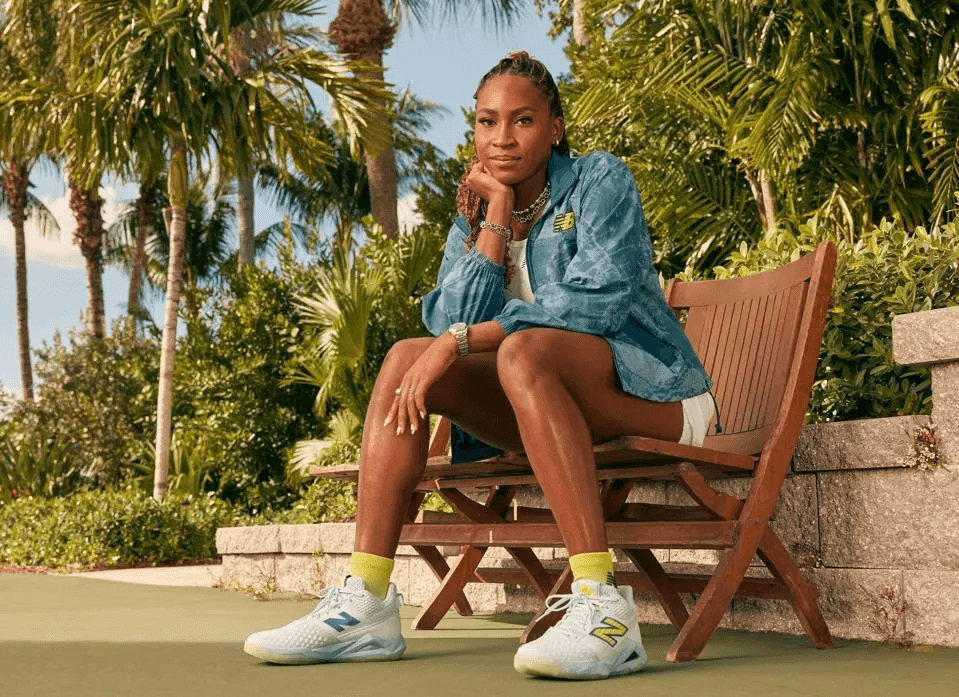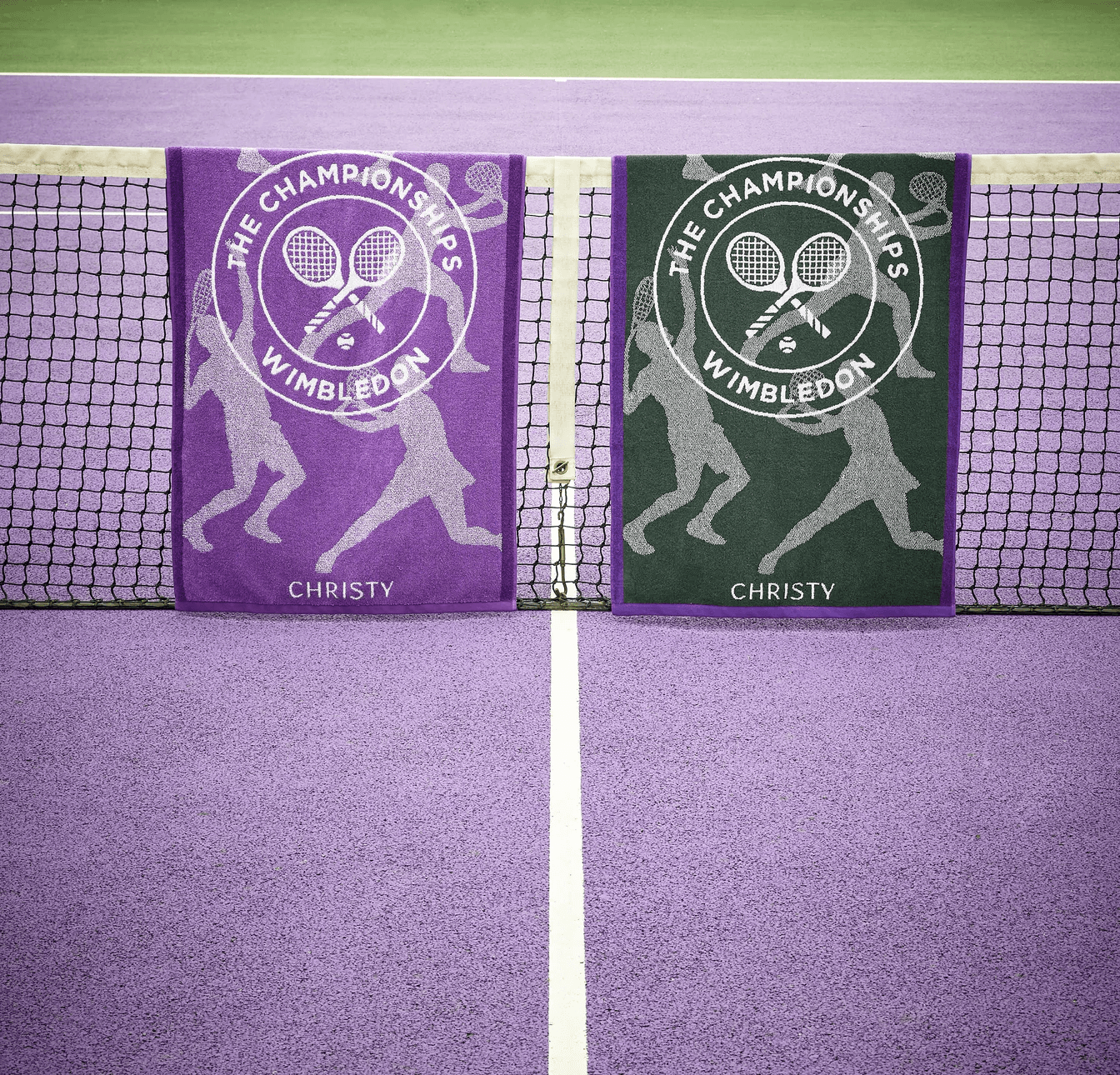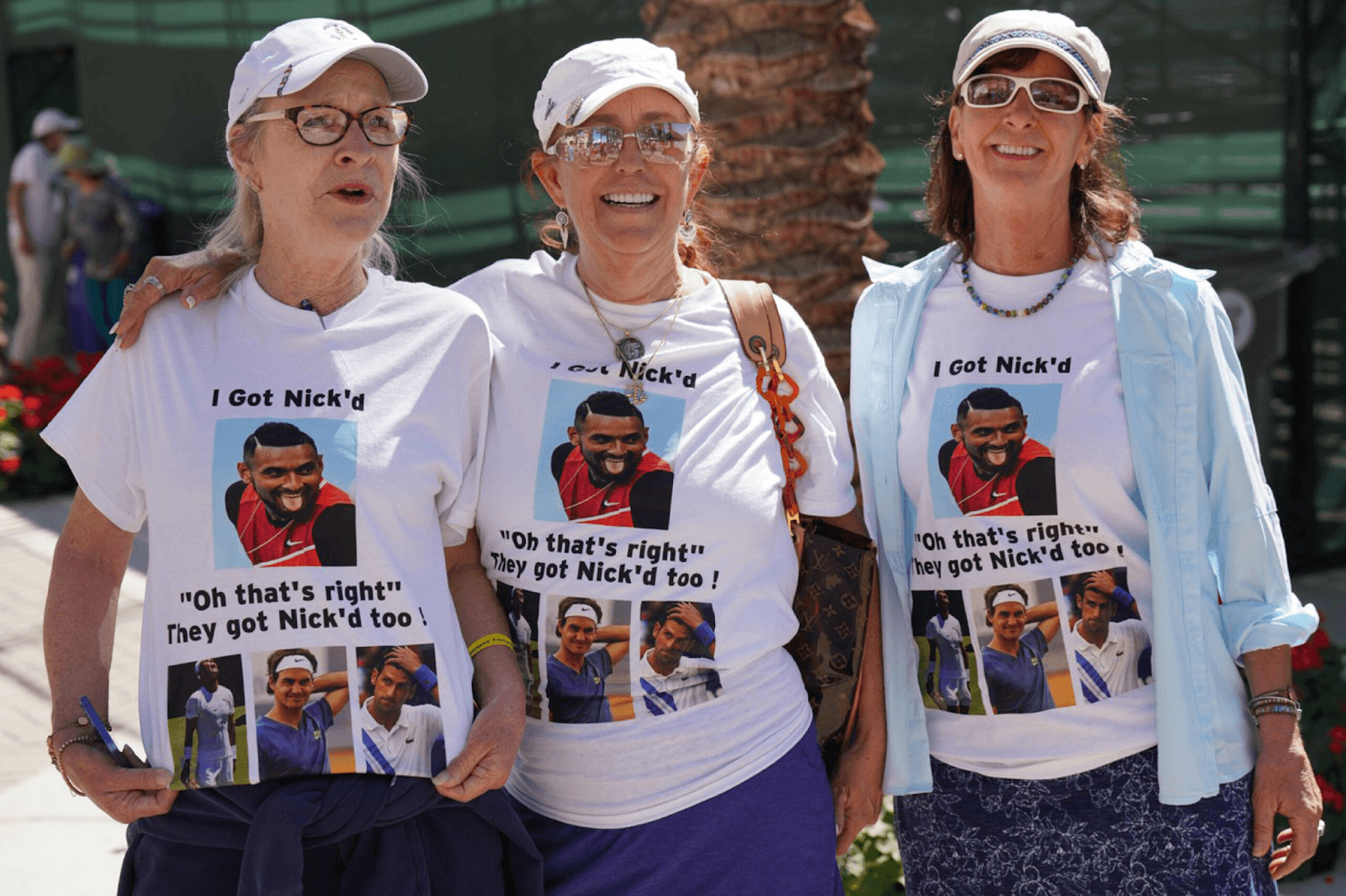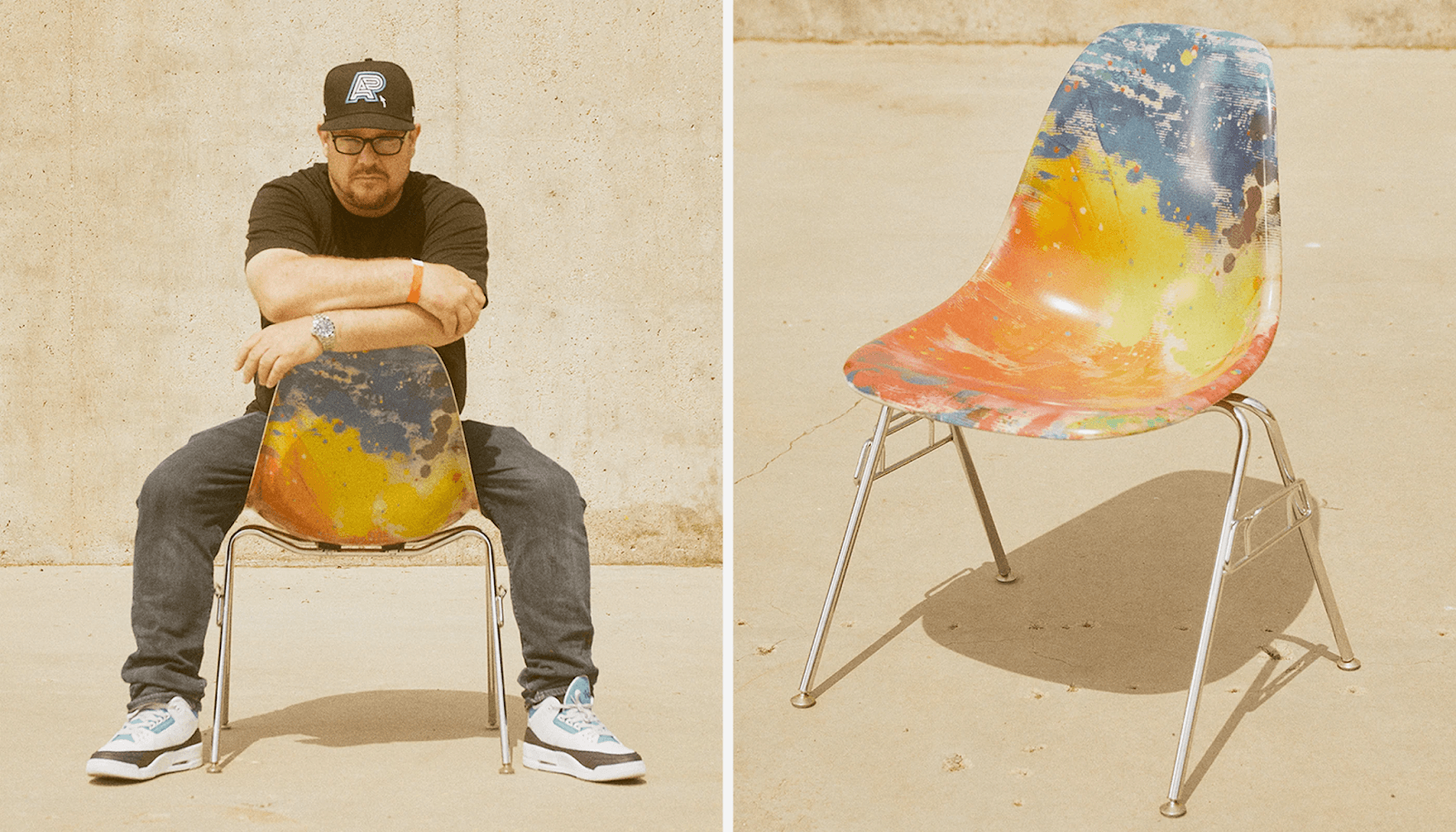Beyond the court: What’s next in tennis brand extension?

TLDR: How the tennis branding ecosystem could be exploring untapped potential brand extensions that engage fans and grow revenue. ""
As we explored in a previous article, sports branding is a world of enormous creative and commercial opportunity. The heightened emotions, the history, the drama — this is stuff brand-owners in other industries can only dream about. In sport, fandom is literally built-in; the question for brands is how to fuel it, enrich it, and expand it.
In this article, we’ll focus on tennis — arguably the most emotionally intense sport of all, with the greatest potential for dramatic twists and turns. Psychologically vicious for the players, and more euphoric than any other sport for the viewers.
This is a sport with deep heritage, fast approaching Wimbledon’s 150th anniversary. A sport that’s on the up, with combined viewership for Grand Slam tournaments of nearly 2 billion people worldwide in 2024, and over 3 million fans attending the events.
And yet the untapped potential for engaging fans and growing revenue is huge.
Below, we’ll look at the tennis branding ecosystem today, barriers to brand extension in tennis, and ideas for a more flexible, more marketable, more profitable way forward.
Key characters in the tennis ecosystem
Let’s begin by mapping out the parties that shape IP and licensing decisions in tennis:
Governing bodies
The International Tennis Federation (ITF) is the global governing body for tennis. The ITF regulates the rules of the game, organises major international competitions, and promotes tennis development worldwide. It oversees events like the Davis Cup, Billie Jean King Cup, and the Olympic tennis competition.
The Association of Tennis Professionals (ATP) governs men's professional tennis. It controls the ATP Tour, which includes Grand Slam tournaments, ATP Masters 1000, ATP 500, and ATP 250 events.
The Women's Tennis Association (WTA) is the governing body for women's professional tennis, formed in 1973 by Billie Jean King. The WTA Tour features premier tournaments including Grand Slams, WTA 1000, WTA 500, and WTA 250 events.
The United States Tennis Association (USTA) governs tennis in the United States, organising the US Open and running national programs for youth and adult participation.
Tennis Australia organises the Australian Open and manages grassroots initiatives throughout Australia.
The Lawn Tennis Association (LTA) is the governing body for tennis in the UK, responsible for promoting tennis at all levels in the country.
Whilst the sport wouldn’t function without these organisations, they’re often invisible to fans. Only the most hardcore tennis enthusiasts could tell you which body is responsible for what.
Key Events
The four Grand Slam tournaments are:
Australian Open (January) - Played on hard courts in Melbourne
French Open (May-June) - The only Grand Slam played on clay courts at Roland Garros, Paris
Wimbledon (June-July) - Played on grass courts in London
US Open (August-September) - Played on hard courts in New York
These events all have big spikes in interest once a year. They’re brands in their own right but primarily serve as storytelling vehicles and platforms for the leading tennis talent of the day. In between each tournament, interest and engagement is limited — this is clear when looking at Google search trends data:

Suppliers and sponsors
There’s an ecosystem of brands woven into the fabric of tennis — clothing and equipment brands, event sponsors, and brands producing collectible souvenirs and merch.
Nike remains one of the most influential tennis clothing brands, worn by top players including Jannik Sinner, Carlos Alcaraz, and Anna Kalinskaya. Adidas continues to be a major player, sponsoring athletes like Alexander Zverev, Jessica Pegula, and Stefanos Tsitsipas. Meanwhile, New Balance has gained prominence, sponsoring the Australian Open and working with ambassador Coco Gauff on her signature CG2 shoes.

Lacoste maintains its heritage position with endorsements from Novak Djokovic, Daniil Medvedev, and Venus Williams. And Lululemon, originally known for yogawear, is making big moves in tennis, recently signing Frances Tiafoe as a global ambassador after previously partnering with Leylah Fernandez in 2022.
Polo Ralph Lauren has a long-standing partnership with Wimbledon, creating official merchandise including canvas backpacks featuring the tournament's logo. And Christy produces the iconic Championship Towels for Wimbledon.

Players
As the WTA has rightly recognised with its recent rebrand, it’s all about the players. Tennis is nothing without these personalities, without their pursuit of greatness, without their inevitable struggles, without the pure intoxicating intensity of every pivotal point — two brains and bodies locked in a beautiful, brutal battle.
Players are the emotional hook that draws people in and turns them into lifelong fans. They’re who people follow on social media. They’re the beating heart of the sport. That’s why Coco Gauff, at just 21 years old, already has more followers on Instagram than the official WTA account. It’s why Carlos Alcaraz (also 21) has more followers than the official Wimbledon account (and nearly twice as many as ATP). It’s why John McEnroe’s infamous Wimbledon meltdown has millions of views on YouTube. And it’s why Nick Kyrgios fans make their own t-shirts…

Fans
Tennis might be nothing without the players, but the emotion and entertainment they bring is only meaningful if there’s an audience to be part of it all. If players are the beating heart of the game, fans are the lifeblood. Without fans, there’s no product, no community, no collective memories of the moments that matter. Without fans, there’s no fame, no crowds holding their breath, and no kids inspired to pick up a racquet by their favourite star.
This might all seem like stating the obvious, but fans aren’t routinely part of the equation when IP decisions are made. As Matthew Willis writes in The Racquet: “Tennis needs to treat, serve, and understand both its new and established fans significantly better,” especially when many potential fans still see the sport as “expensive, elitist, and rather monocultural”.
Put simply, brands within the tennis ecosystem have three responsibilities to fans:
Get more people excited about tennis
Give tennis fans new ways to feel and share their passion
Help people move from casual to hardcore fans
That requires a broader range of culturally-eclectic entry points — new content and products that invite a wider range of people to discover tennis and get involved with it. And it requires a more creative, more collaborative, less protective approach to IP, looking beyond established tennis traditions.
IP Tetris: Who owns what in tennis?
A Wimbledon towel. A Djokovic NFT. A Federer x Uniqlo capsule. ATP x Tennis-Point merch. These are just a few examples of the products that leverage the reputations and narratives of famous names in tennis, be they individuals or organisations. Some products are rooted in an event brand, some in a player identity, some lead with the governing body brand. The manufacturer is a key part of the puzzle, but the manufacturer brand isn’t always prominent.
Outside of carefully curated collaborations, rights are fiercely guarded. Brands stay siloed, and there’s no scope for assets to interact across these tightly-managed boundaries. But what if there was a different way to think about IP?
Lessons from the toybox: Hasbro x Mattel
In the toy industry, Hasbro and Mattel — two IP-led businesses worth billions — have long been arch rivals. Both businesses have rejected attempts from the other to acquire them in the past. But now, they’re in creative partnership. In a surprising turn of events, the longtime rivals entered into a multi-year licensing agreement in 2023 to create co-branded toys and games.

This unprecedented collaboration includes Hasbro creating Barbie-branded Monopoly and Mattel producing Transformers-branded Hot Wheels vehicles. As retail expert Carol Spieckerman argues:
“Co-branding makes all kinds of sense for Mattel and Hasbro and licensing is the most agile way to make it happen. Mattel and Hasbro retain unique stables of properties that will pack more punch, and gain wider distribution and awareness when combined.”
Two previously incompatible worlds, now co-branding like Marvel characters in a crossover film.
Imagine…
Imagine Nadal x Wimbledon x Babolat limited-edition gear, released to mark the 20th anniversary of his first Wimbledon win.
Imagine an Osaka x Overwatch (one of her favourite video games) branded chair at Roland Garros — a partnership in the same vein as the collaboration between American furniture brand Modernica, graffiti artist Stash, and Jiu-Jitsu brand Albino & Preto.

And returning to toys… imagine if Wimbledon pushed to make fan-driven ideas like this Centre Court LEGO-set a reality.

Fans love these kinds of narrative collisions. Merging multiple worlds they care about can amplify their attachment on all fronts. But tennis, along with other major sports, is still too focussed on who gets the credit.
Fan-first thinking: What do people actually want?
The starting point for tennis brand extension decisions should never be “who owns the IP?” It should always be “what will the fan feel?” That’s how reach grows, how relationships deepen, and how the sport remains relevant. So what are fans seeking, exactly? Let’s break that down a bit…
Access
People want access. They want to be able to watch the games they’re interested in without subscribing to six different services. They want to be able to watch full-length clips of classic matches. They want to see behind the curtain, learning more about their favourite players’ lives and personalities.
Immersion
The events themselves have a unique narrative allure. During tournaments, fans care about the story of each match, and the career stories of the players involved. They’re captivated by the sensory details — the all-white kits, the colour and texture of grass or clay, the distinctive thwack of a 140mph serve, the grunts, the screams, the cheers, the tears. All part of a bigger unfolding story — the changing nature of the game itself over years, decades, and centuries. Whether attending in person, watching live on TV, or discussing key moments online, fans want to drop into the experience and be part of the conversation.
Ownership
From making or remixing memes, to creating original tennis-related content, to pitching product ideas directly to brands or launching their own cult tennis businesses, the most committed fans want to shape tennis culture, not just enjoy it.
Fans want to feel part of the tennis story. They want to feel closer to the glory and the greatness of their heroes. And they want to make tennis part of their identity, signalling to others that they’re more than just casual followers of the game. The restrictive IP environment rarely makes this easy.
What’s holding tennis brands back?
Protective attitudes
Tennis brands are clearly reluctant to lose control of rights they own. Disputes over who owns what are common; Roger Federer’s dispute with Nike over ownership of the RF logo is a case in point. And in March 2025, the Professional Tennis Players Association (PTPA) — co-founded by Novak Djokovic — initiated legal proceedings against tennis' regulatory authorities, including the ATP and WTA, claiming that “professional tennis players are ensnared in a manipulated system” that restricts their “ability to manage their own careers and brands.” Whilst there are clearly two sides to this argument, in IP shenanigans like this, it’s usually the fans who lose out.
Licensing barriers
Licensing arrangements are often confusing too. In the UK alone, Grand Slams have deals with four different broadcasters, excluding fans who can’t afford so many subscriptions. Alongside this, players face strict limitations on sharing their own match footage on social media. This policy has been criticised by players like Coco Gauff and Daria Saville for impeding their ability to promote themselves and engage with younger audiences. There are also unhelpful obstacles for the people behind the cameras, as Matthew Willis observes on The Racquet:
“Tennis, at the moment, is famously closed-minded and restrictive when it comes to what content employees are allowed to do creatively on site at tournaments. F1 is the shining example to follow here, since Liberty Media took over the sport in 2016 and basically opened up a constant stream of behind-the-scenes action and social video production (which has contributed to 100% digital growth year on year).”
Closed thinking
“Stay in your lane” thinking remains common in tennis and other sports, with established hierarchies and habits proving resistant to disruption. But, disruption happens regardless — just look at the rise of paddle and pickleball. The onus is on the leading brands to take charge, driving change with bold and imaginative action.
Alongside IP giants like Hasbro and Mattel loosening the reins, lifestyle brands are showing what’s possible with a more creative, open, and agile mindset. Streetwear drops, sneaker collabs, and context-mashing content creators have rewired people’s expectations and set a new cultural tempo.
Fans expect fusion, and they expect it fast. As with all heritage brands, the challenge is staying connected to the past whilst finding fresh ways to bring new audiences in.
Ready for tennis 2.0?
It’s time for leading tennis organisations to embrace their role as entertainment brands, building infinite, interconnected story worlds. That means thinking about IP through the lens of abundance, not scarcity, and seeking out collaborations that excite and surprise people.
The future of tennis branding won’t come from clinging to control but from shared storytelling, and putting the fan right in the middle of the web.
What if…?
What if the ATP hosted a remix tournament with streetwear designers?
What if the WTA and ATP created a joint streaming platform with behind-the-scenes content, player vlogs, and classic matches on demand?
What if tennis governing bodies opened up their archives to fan creators, letting them remix historic footage into new content?
What if players could design limited edition merchandise drops involving 10 different brands?
What if Grand Slams collaborated with gaming studios to create virtual tournaments where fans could play as their favorite pros, customising their outfits and gear however they choose?
See how it's done in other sports
Want to see what Skew can do with brands in the sporting world? Take a look at some of our sports branding work from recent years:






